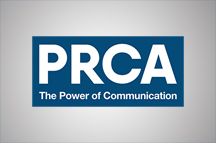The landscape of the Public Relations industry is constantly changing, and it’s imperative that we (and our representative bodies) evolve with it. It is with this in mind that I welcome the proposed merger between the APPC and PRCA – if you’ve ever helped clients in this situation, you’ll know why.
Discussions have been taking place for several years, but we’ve reached the critical point: we have a formal proposal for merger, and we, the members, now have the chance to determine the future of self-regulation in public affairs.
Ballots hit the desks of lobbying organisations across the country today and the vote itself will take place at an EGM at the start of October.
There has been considerable support in favour of the merger from PRCA members, and as the Chairman of an independent PR agency I echo that sentiment. As Founder and Chairman of The PHA Group, I feel sure that the need for a single body to represent the industry is greater than ever. We would never advise our clients to dilute their voice; to create two separate campaigns when the work can be housed under one roof; to replicate their efforts; or to, ultimately, work in silos. Our membership bodies should be no different: let’s approach this with the sort of professional pragmatism we deploy when helping clients achieve policy change or media coverage and vote for merger.
We should instead speak as a collective and unify 1,800 Public Affairs practitioners and 3,000 clients into one organisation. We should, and we can, if fellow APPC members vote for this merger to go ahead. It’s been said before in rather different circumstances, but we’re “better together”. Public affairs demands cool heads and sound reasoning: while resistance to the merger is levelled mainly in emotive arguments, I would urge members – again – to be consistent and ask themselves “How would I advise my client in this instance?”. The answer, if you’re following, is clear: consolidate, speak up, work together, combine the best of both organisations, and merge.
Let’s take just one argument and put it to bed here: some have argued that this will reduce standards. As stated in the Memorandum of Understanding between the APPC and the PRCA: “The two parties agree that one Public Affairs Code will be created for our industry. The PRCA will accept the current APPC Code as the basis for this new unified code. The Public Affairs Code will replace the existing Codes and apply to all members in their conduct of public affairs.”
If the merger takes place the combination of unrivalled resources will support the increasing need to research and develop the future of our industry. But more importantly, it makes plain sense to thoughtful practitioners.
Phil Hall, Founder & Chairman, PHA Group














